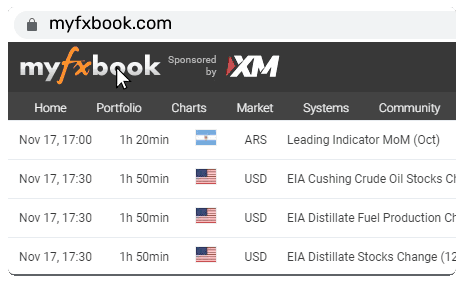Advertisement
Weak Jobs Data Limits Dollar's Rebound

(RTTNews) - A smaller-than-expected addition to non-farm payrolls curtailed the dollar's rally fueled by a hawkish Fed stance, higher-than-expected PCE-inflation readings, as well as anxiety ahead of the U.S.-China trade talks and the looming trade tariff deadline. The week ended August 1 witnessed the U.S. Dollar inter alia gaining against the euro, the British pound, the Australian dollar, the Canadian Dollar, the Swedish Krona and the Swiss franc but slipping against the Japanese yen. Despite the dollar declining after the payrolls data, the Dollar Index closed with weekly gains of more than 1.5 percent.
The Dollar Index (DXY), a measure of the Dollar's strength against a basket of 6 currencies rallied 1.54 percent during the week ended August 1. The DXY which had closed at 97.64 on the last Friday of July, finished trading at 99.14 on the first Friday of August. During the week, the index climbed from the low of 97.49 recorded on Monday to a high of 100.26 recorded on Friday.
Data released by the U.S. Bureau of Labor statistics on Tuesday had showed the number of job openings falling to 7.44 million in June from 7.71 million in May and missing market expectations of 7.55 million.
Advance estimates released by the U.S. Bureau of Economic Analysis on Wednesday showed the U.S. economy grew at an annualized 3 percent in the second quarter, rebounding from a 0.5 percent contraction in the first quarter, and surpassing expectations of a 2.4 percent rise.
The Federal Reserve on Wednesday maintained the target range for the federal funds rate at 4.25 to 4.5 percent. It acknowledged the moderation in economic activity in the first half of the year as well as the low unemployment rate, solid labor market conditions, and the elevated inflation. The Fed's forward guidance however did not carry any firm hints of a rate cut in the next meeting due in September.
The year-on-year PCE Price Index for June increased more than expected to 2.6 percent. Markets had expected a level of 2.5 percent. The core component thereof which was expected at 2.7 percent, however, came in higher at 2.8 percent. The month-on-month PCE Price Index as well as its core component, both increased to 0.3 percent, matching market expectations.
Data released by the U.S. Department of Labor on Thursday showed the initial jobless claims increase to 218 thousand during the week ended July 26 from 217 thousand in the previous week. Markets had anticipated a level of 224 thousand.
In data released on Friday morning, the U.S. Bureau of Labor Statistics showed an addition of 73 thousand to non-farm payrolls in the month of July, versus 110 thousand that the markets had expected. This compared with the previous month's revised reading of 14 thousand. The unemployment rate increased on expected lines to 4.2 percent from 4.1 percent in the previous month. The weak jobs data dampened sentiment towards the greenback.
Concerns about economic activity in the U.S. were renewed after the ISM manufacturing PMI declined to 48 in July from 49 in June, missing market forecasts of 49.5.
The Dollar Index which had closed at 99.97 on Thursday dropped to 98.61 on Friday. The DXY eventually closed the week's trading at 99.14.
Despite the trade deal between the U.S. and E.U., the Euro slipped 1.33 percent against the Dollar. During the week ended August 1, the EUR/USD pair dropped to 1.1586, from 1.1742 a week earlier. The pair ranged between $1.1773 and $1.1391 during the week. Data released during the week had showed annual consumer price inflation in July remaining steady at 2 percent. Markets had expected it to decline to 1.9 percent. Data also showed the Eurozone economy expanding 0.1 percent in the second quarter, sharply slowing down from the 0.6 percent growth recorded in the previous quarter and expectations of a flat reading.
The week ended August 1 witnessed the pound sterling slipping 1.18 percent against the dollar. The sterling, which had closed at $1.3439 on July 25 dropped to $1.3280 by August 1. The GBP/USD pair traded between a high of 1.3454 and a low of 1.3140 during the week.
The Aussie also plunged against the U.S. Dollar during the week ended August 1 amid weak PMI data from China and fears of a tariff-driven global recession. The AUD/USD pair traded between a high of 0.6587 and a low of 0.6419. The slippage for the pair during the week was a whopping1.37 percent, from 0.6567 on July 25 to 0.6477 on August 1. The Japanese yen rallied mildly against the greenback during the week ended August 1 amidst growing rate cut expectations from the Federal Reserve. The USD/JPY pair which had closed at 147.67 on July 25, decreased to 147.38 in a week's time. The pair whipsawed between the weekly high of 150.93 and the weekly low of 147.29 on Friday in the week that saw the Bank of Japan hold rates steady.
The weaker-than-expected jobs data from the U.S. has increased the likelihood of a rate cut by the Fed. The CME FedWatch tool that tracks the expectations of interest rate traders currently shows expectations of a quarter point rate cut by the Fed in the September FOMC at 77.7 percent. It was 80.3 percent on Friday and 63.1 percent on Monday.
Amidst the renewed rate cut expectations, the Dollar Index has declined to 98.67. The EUR/USD pair has slipped to 1.1577. The GBP/USD pair has rallied to 1.3310 ahead of Bank of England's interest rate decision on Thursday. The AUD/USD pair has also edged up to 0.6480. The USD/JPY pair is trading lower at more or less flat at 147.06.


















